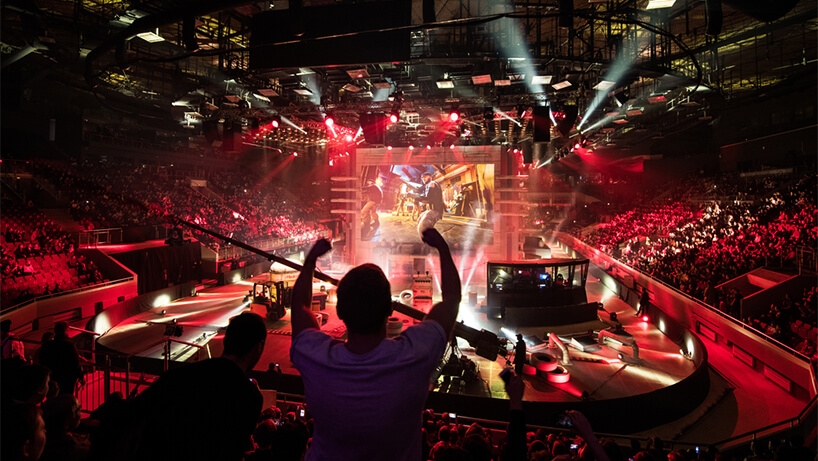When HP invites at-home viewers to be part of the action at an event, it turns to a surprising question: How do you want to inflict pain on the people on stage?
Blinding smoke and tornado-like wind gusts aren’t exactly traditional event elements, but the minds behind HP’s The OMEN Challenge — where you’ll find people on stage battling these forces — aren’t traditional event organizers. The challenge happens each year at TwitchCon, the gathering of people who love the live-streaming video gaming platform Twitch. “HP creates these all-star teams with some of the biggest names in online gaming, and they take the stage at TwitchCon,” Donny Neufuss, director of digital engagement and eSports vertical market leader at PRG, said in the PCMA webinar “The Best of Digital for Events.” “Then, they go to the audience in the arena and the audience watching at home and ask them how they should make the game even harder.”
Making it harder is fairly easy because all the players are sitting in four-dimensional “torture chambers.” No, this isn’t medieval-style, trauma-inducing persecution. Instead, it’s a multi-sensory approach to making gaming more challenging. Neufuss said that “lightning” is a popular obstacle that involves a barrage of strobe lights displaying in their faces while attempting to navigate what’s happening in the game. “Tornado” is another setting that uses wind machines to pump massive bursts of air at the contestants. “It’s all crowdsourced,” Neufuss said. “The audience gets to dictate what’s happening on stage.”
A New Definition of Engagement
Many event organizers may scoff at torture chambers — and no one is recommending that this kind of crowdsourced activity would work for scientific keynote speaker running through a presentation on a new piece of research. However, Neufuss said that everyone in the events industry can take a valuable lesson from the approach to keep everyone in the audience invested in what’s happening on stage.
“When we think of second screen [in the business-events industry], we tend to think of it as a technology that gives attendees the slides on their own device and the ability to take notes and answer poll questions,” Neufuss said. “But what if we think about second screen as a tool that gives the audience the ability to have a say in the action? They can create what they want — not what you think they want.”
It’s easy to see how an event organizer might apply a similar approach to a traditional educational program. Which concurrent session do attendees want to see next? Which song choice should serve as the soundtrack during programming breaks? Which camera angle do attendees want to see of the keynote speaker?
Empowering attendees to have a bigger voice is clearly a win for them, and Neufuss pointed out additional good news for organizers: It’s easy. At TwitchCon, organizers simply asked the audience — at home and in the arena — to cast votes on Twitter with a hashtag for the version of torture they wanted to see. “It doesn’t have to be tremendously complicated to do something like this,” Neufuss said.
So go for it. Torture away. And be sure to register for the next installment in the webinar series that will feature more insights from Neufuss and Signifyd’s Sourabh Kothari.

